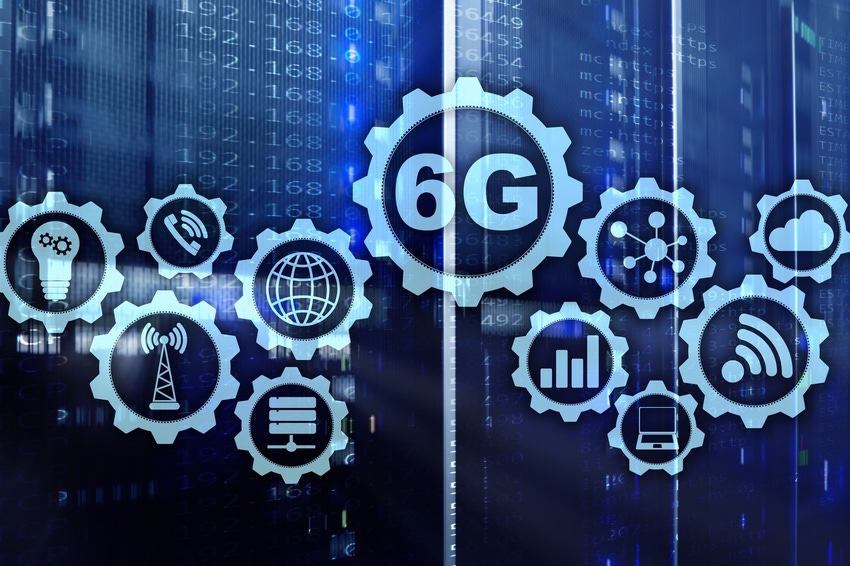What should 6G be?
Work has started in earnest on 6G. Various bodies opine on what it should be – and broadly seem to conclude it is basically the same vision as 5G, but even bigger and better, if that is possible.
February 24, 2021

Telecoms.com periodically invites expert third parties to share their views on the industry’s most pressing issues. In this piece William Webb, CEO of Webb Search, looks at how things are going in the early days of 6G development.
Work has started in earnest on 6G. Various bodies opine on what it should be – and broadly seem to conclude it is basically the same vision as 5G, but even bigger and better, if that is possible. Is this right? Indeed, should there even be a 6G?
There is an adage in the cellular community that the odd number phone generations have been disappointing – they have lost money for the operators and failed to deliver on promises – whereas the even numbers have delivered. There is some truth in this, broadly the odd numbered generations have pushed into the unknown and understandably made mistakes in doing so, and the even generations have been used to fix those mistakes. On that basis, we will need 6G to fix all the problems with 5G.
Are there problems? Broadly yes. 5G was promised to deliver 1,000x more capacity than 4G, 100x more data rates, 1,000x more machines connected and less than 10% of the energy consumption. It will not get remotely close. Why this is so is explored in a blog I published with Strand Consulting, but broadly the combined decisions to use much higher frequencies at 3.5GHz and yet the existing cell sites designed for lower frequencies mean that most mobiles will see weak 5G signals, reducing efficiency and data rates and increasing power consumption. One of the big problems with 3G was moving up the frequency band to 2.1GHz, one of the key advantages of 4G was moving back down to 800MHz. We failed to learn that for 5G.
So perhaps there should be a 6G, and its role would be to sort out 5G, based on what we have learnt. But therein lies a problem. To really understand what works well and not so well will take years. For example, we are only now starting to understand how well massive MIMO antennas work. So if 6G’s role is to fix 5G then it would make sense to wait perhaps until around 2025, take stock, understand what applications have emerged, and then design a system based around solving observed problems.
Unfortunately, the pressures on 6G mean nobody will wait. Academics need something to do. Manufacturers want to tee up their next burst of new equipment sales. Governments think there is an opportunity to gain global influence by moving early. History has cellular generations occurring every decade meaning work on the next one needs to start as soon as the current one is launched. And 5G hype seems to be extending into 6G. My first recommendation is wait until 2025 to start 6G work, and not to set a target date for its completion until what it should be is well understood.
If we cannot wait, then we need to decide what 6G should be. But who is “we”? At the moment it is broadly the same set of people and organisations that designed 5G – hence the calls for “bigger and better”. But this is the same team that assumed remote surgery was a key driver, and that autonomous cars would need to be controlled by 5G (Tesla recently said they did not need any connectivity). A better team might include sociologists, VCs, application designers, economists, regulators and politicians. And even end users. Hence my second recommendation, do not leave 6G design to the engineering research institutions – they will have a critical role once we decide what it is, but should not control the initial framing of the problems it needs to solve.
Perhaps we can be clear on some things that 6G should be. Rural coverage remains an issue and 5G does not address it. 5G was right that small cells are needed for capacity, but wrong that these will be outdoors – mostly they need to be within buildings and 5G does not provide the right economics and shared spectrum to make these proliferate. 6G could help “defragment” the very messy spectrum below 1GHz, making effectively twice as much available for cellular by removing guard bands and enabling TDD, helping rural connectivity. 6G could embrace shared spectrum, as pioneered by CBRS, allowing self-deployment, in-building solutions, systems for verticals and dynamic new entry of different kinds of operators. But these are not sexy, nor are they particularly difficult (hence not of interest to academics and researchers). They failed to get addressed effectively in 5G. My third recommendation is to look to the economics of network provision and design a system that realistically will deliver ubiquitous good-quality mobile broadband.
It has long been clear that wireless plays a critical role in climate change, in an aging population, in helping during times of pandemic and in making our world a better place. To do this pervasive IoT connectivity is needed. In 2010 Cisco and Ericsson forecast 50 billion connected devices by 2020 – there are about 8.5 billion. The reason why we did not even achieve 20% of the forecast is explored in a book I co-authored with Matt Hatton, “The IoT Myth”, but broadly it is because complete solutions are not readily available for industries wishing to deploy IoT. 5G changes nothing – it just rebrands 4G’s NB-IoT as the 5G machine connectivity solution. 6G could help fix this – not with 1ms latency, but with practical, economic end-to-end solutions that entities like smart cities can deploy. My fourth recommendation is to focus on getting existing connectivity such as NB-IoT, packaged in a manner that allows us to realise the 50 billion vision.
Is there any hope for any of these recommendations? It seems unlikely. Many powerful forces are pushing us towards another experimental generation, and away from the “even numbers fix the problems” that we have had in the past. Historically it has been intervention by the mobile operators that has injected realism into the research and standardisation. But this time those operators that are vocal seem more interested in marketing opportunities than in fixing problems.
 William is CEO of Webb Search providing independent telecoms consultancy and advice. He was one of the founding directors of Neul, and became CEO of the Weightless SIG. Prior to this William was a Director at Ofcom. He was IET President 2014-2015, has published 17 books, has multiple honorary doctorates and awards.
William is CEO of Webb Search providing independent telecoms consultancy and advice. He was one of the founding directors of Neul, and became CEO of the Weightless SIG. Prior to this William was a Director at Ofcom. He was IET President 2014-2015, has published 17 books, has multiple honorary doctorates and awards.
Read more about:
DiscussionAbout the Author(s)
You May Also Like









.png?width=300&auto=webp&quality=80&disable=upscale)

_1.jpg?width=300&auto=webp&quality=80&disable=upscale)


.png?width=800&auto=webp&quality=80&disable=upscale)